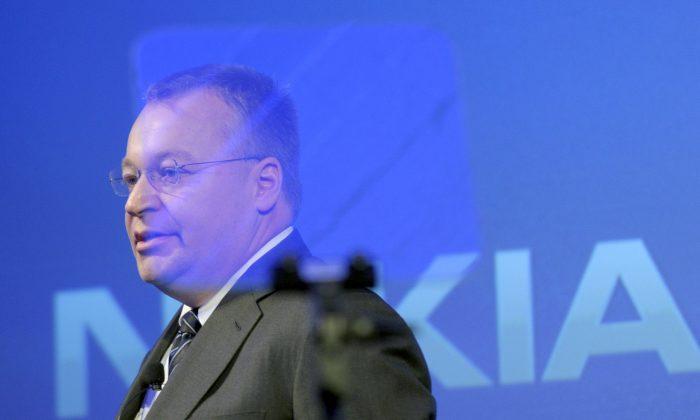Like Microsoft Inc., Finnish Nokia Oyj was once the unchallenged leader in its industry. More than a decade later it had to sell its mobile phone unit to Microsoft for $7.15 billion, including licensing fees for Nokia’s patents.
Nokia shares rose 34 percent in Finnish trading and Microsoft lost 4.6 percent on the NASDAQ Sept. 3.
The transaction announced Sept. 3 will mark the end of Nokia’s once dominant position in mobile telephony (down to 15 percent from 40 percent in 2007) and will have it focus on networking, maps and its remaining patents and intellectual property (IP) portfolio.
For Microsoft, it means a last ditch effort to catch up to Google and Apple in the vital smartphone market.
“Bringing these great teams together will accelerate Microsoft’s share and profits in phones, and strengthen the overall opportunities for both Microsoft and our partners across our entire family of devices and services,” said Steve Ballmer, Microsoft CEO.
“We can now bring together the best of Microsoft’s software engineering with the best of Nokia’s product engineering, award-winning design, and global sales, marketing and manufacturing,” said Stephen Elop, Nokia President and CEO, destined to head the new Microsoft Devices & Services division. Elop was the first foreigner to head Nokia and worked for Microsoft from 2008 to 2010.
The two companies had been partners in the smartphone space since 2011, when Nokia and Microsoft entered into an agreement in to sell a smartphone manufactured by Nokia running the Windows Mobile platform. The result is the Lumia series of phones, which have seen decent growth, but only have a 3 percent market share, selling 7.4 million units in the second quarter of 2013.
Strapped for cash, Nokia did not have the cashflow to continue developing leading technologies, even with Microsoft as a partner. By taking the device business in-house, including its 32,000 employees, Microsoft can use its extensive resources to realize its ambition to provide an alternative to Apple and Google.
“We cannot risk having Google or Apple foreclose app innovation, integration, distribution, or economics,” Microsoft states in a presentation released Sept. 3.
The company also stated it goal for an ambitious 15 percent market share by 2018 and stressed “we need a first-rate Microsoft phone experience for users.”
Analysts think the deal could pay off for Microsoft but carries some risks. A report by Citigroup outlines that Microsoft will receive around $40 in gross-profit per device instead of the existing estimated $10 software licensing fees. On the flip side, it “takes on all of the execution and market risk.”
Microsoft predicts the unit, which generated 14.9 billion euro ($19.6 billion) of sales in 2012, to contribute to earnings by 2015, but Citigroup thinks this could happen earlier. Microsoft will tap into its overseas cash resources of $67 billion to fund the acquisition.
All in all, the deal is very similar to Google’s acquisition of Motorola for $12.5 billion, which included a device business and many patents. Apple, Samsung, Google and Microsoft have been fighting patent-wars across all continents and Nokia’s portfolio will come in handy.
Nokia’s History of Reinvention
For Nokia, the sale marks the end of a chapter which began in 1987 with the development of its first hand-held phone. In the end, the loss of market share and cash-burn were so severe that the company laid off 40,000 people and investors were afraid the company could go bankrupt. Last year, Nokia recorded a net loss of 3.1 billion euros ($4.1 billion).
But Nokia, which started off as a paper mill in 1865, has a history of reinventing itself. In 1898 it started to produce rubber works, in 1910 it ventured into electricity, and by 1967 it moved to radio and telecommunications. This year marks another turning point, but the company will continue to do business, at least for the time being.
“Today’s deal leaves Nokia largely as telecom equipment focused business around Nokia Solution and Networks (NSN). NSN has been performing well of late following its drastic restructuring, but we do question the long term sustainability of this business given it is very focused on only parts of the network (radio access),” says a report by Barclays.
The company’s other two divisions include maps, which Microsoft intends to license as an alternative to Google Maps, and a diverse intellectual property portfolio. The intellectual property portfolio can provide revenues through licensing and royalty agreements.






Friends Read Free